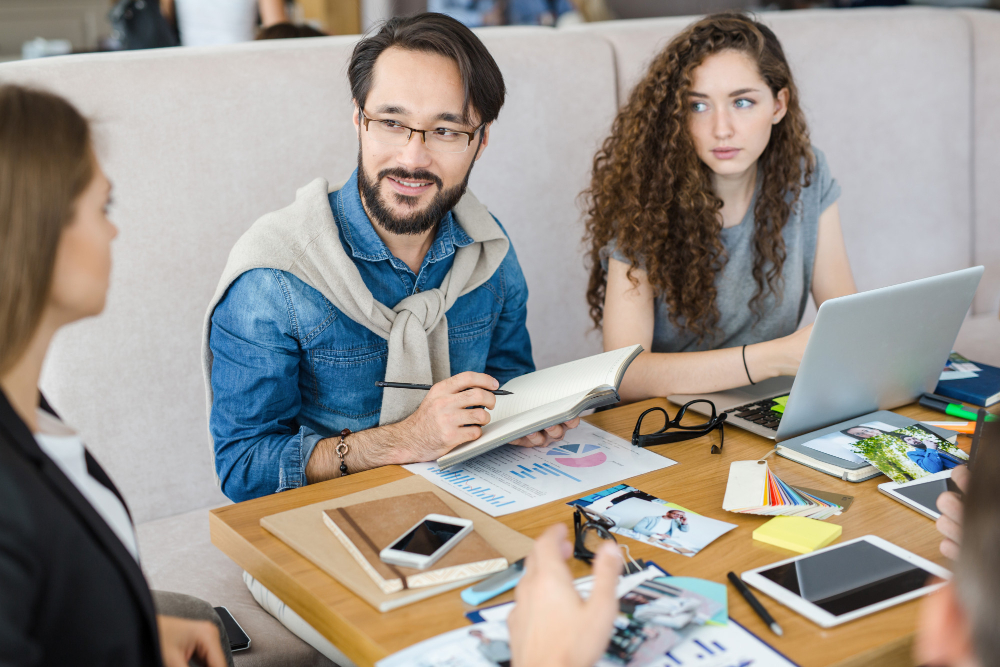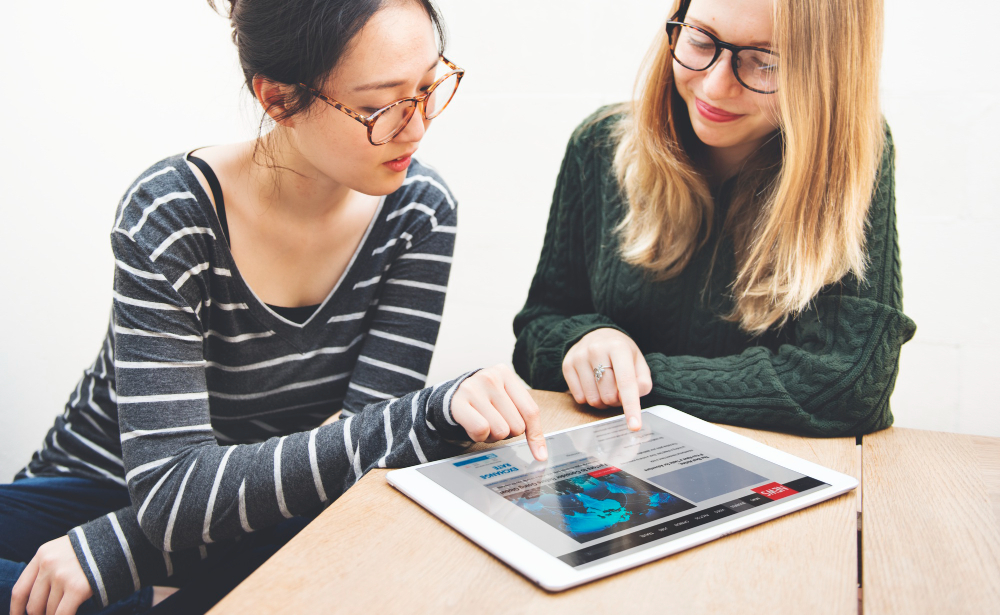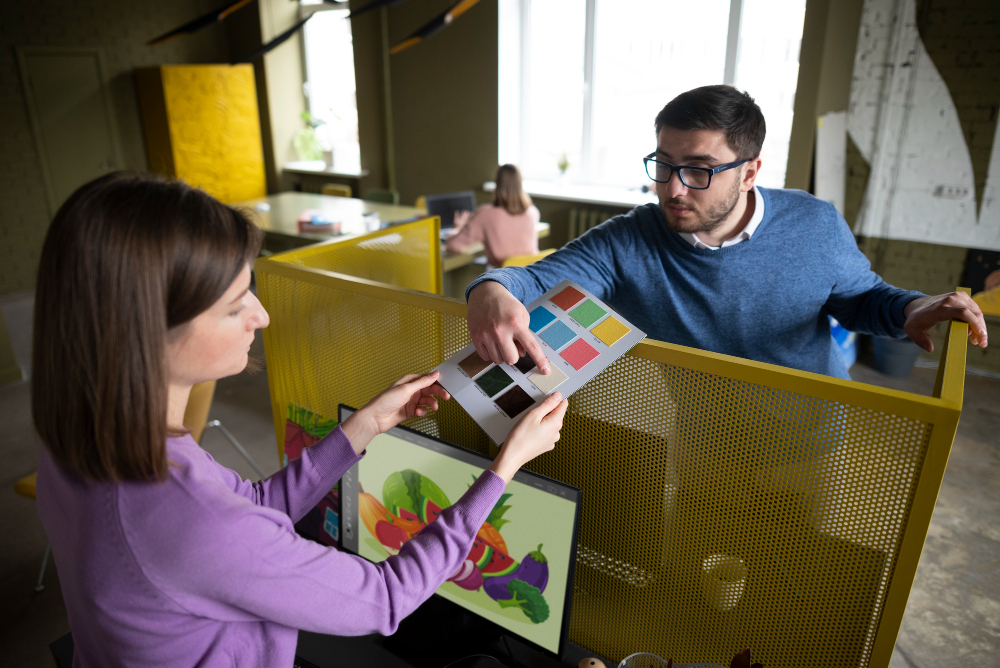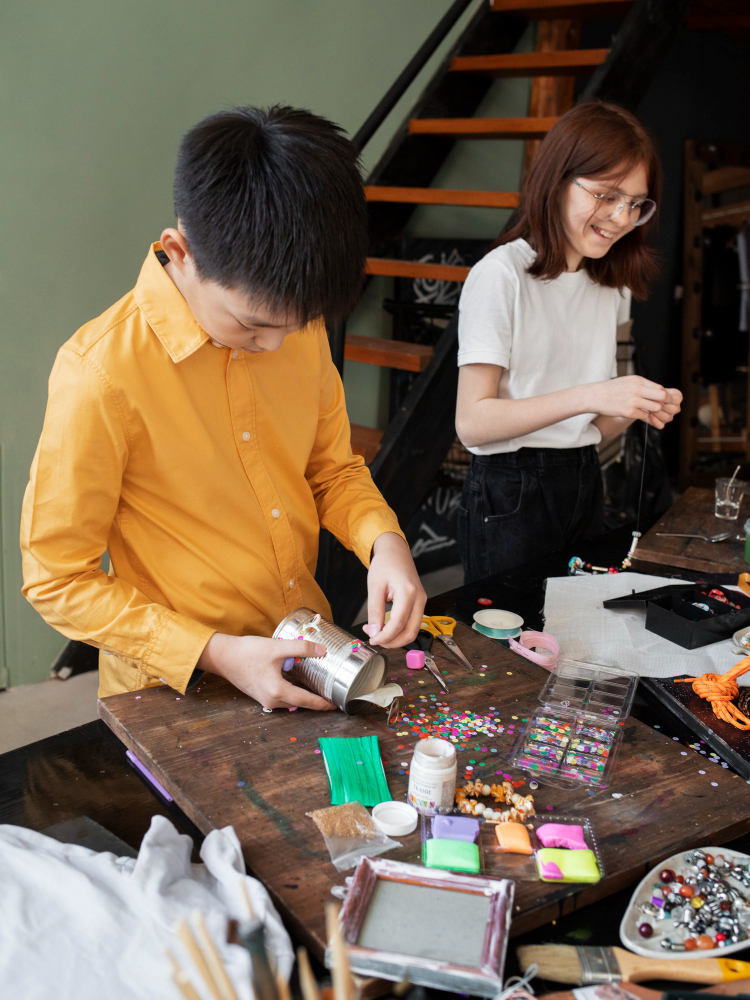Artists and Tech Integration: 7 Tips
In a world where art meets technology, artists aiming to blend custom tech solutions into their work navigate a landscape filled with hurdles and opportunities. Whether it’s figuring out exactly what tech they need or learning how to allocate their funds wisely for tech investments, the path to integrating technology into their art is no simple feat. Moreover, gaining new digital skills, getting to grips with managing projects efficiently, and putting together a digital showcase of their work are all essential steps on this journey.
These seven essential tips illuminate how artists can effectively merge technology with creativity. This process is about enhancing their current projects and ensuring their art thrives and evolves in the digital age. Let’s dive into how adopting these strategies can transform how artists create and present their work.
Identifying tech needs is crucial because it ensures artists invest in technology that directly benefits their projects. Budgeting for technology is equally important as it helps artists plan their finances and avoid unnecessary expenses. Digital literacy opens up new possibilities for artists to experiment with different tools and platforms. Understanding project management is critical to keeping projects on track and within budget. Lastly, creating a digital portfolio is vital for artists to showcase their work to a broader audience, making it easier to share and sell their creations online.
By embracing these tips, artists can confidently navigate the tech landscape, enhancing their art and expanding their reach.
Key Takeaways
The intersection of art and technology is transforming creative expression. Artists must adapt to stay relevant. Mastery of tech tools enables unique artistic innovation.
- Tech skills make artists stand out.
- Continuous learning fuels fresh creations.
- Creativity and technology are mighty together.
Identify Your Needs
When blending technology with your art, it’s critical to figure out where you need it most and how tech and art combine to offer endless chances to boost your creativity and make your work process smoother. Yet, the success of these tech tools depends on how well they fit your art’s unique needs.
By learning the ins and outs of how you create, you can spot exactly where a tech tool could make a big difference. Maybe it’s making the brainstorming part easier, improving how you make your art, or making the final piece look better. Picking the right tech can change the game for your art. This step of thinking profoundly and figuring out what you need is essential for smartly blending tech into your work.
Plus, keeping up with how art and technology constantly change is essential. As your art changes, the tech you use should, too. This keeps your work fresh and lets you keep pushing the limits of your creativity.
In short, knowing what you need and staying flexible with the tech you use is crucial for making the most out of technology in your art.
Research Custom Solutions

When artists consider adding custom tech to their projects, they must carefully pick technologies that fit their creative goals. It’s essential to weigh the costs against the benefits to ensure the tech makes the artistic process better and affordable. This step is crucial for artists to make creatively and financially sound choices.
Starting this journey lets artists choose wisely, ensuring their projects are both innovative and cost-effective.
Identifying Suitable Technologies
To seamlessly blend custom technology with your art projects, starting detailed research to find tech solutions that align with your unique goals is crucial. This process intertwines art with technology, elevating the creative experience by wisely using new tech tools.
- Discovering innovative tools that expand the limits of traditional artistic methods
- Using software that makes the creative process more efficient
- Trying out digital platforms for distinct artistic expressions and reaching more people
- Getting advice from experts at the art and technology crossroads for insights and direction
This strategy allows artists to stay updated with fast-paced technological advancements and fully utilize technology to push the boundaries of their creative work.
Analyzing Cost-Benefit
Artists looking to invest in custom technology solutions for their projects should start with thorough research. This will help them understand the costs and compare them with the expected benefits. Custom technology, explicitly designed for an individual’s artistic needs, can dramatically improve their work’s efficiency, creativity, and productivity. Yet, it’s crucial to consider any downsides and constraints to ensure the tech aligns with their artistic vision and budget.
To make informed decisions, artists should evaluate the benefits carefully. These might include more personalized tools that could transform their creative process. Considering these advantages allows artists to use technology to boost their work strategically. This careful evaluation helps artists confidently and accurately integrate technology into their creative process, ensuring they maximize their investment.
Budgeting for Tech

In the world of custom tech integration, artists find that intelligent budgeting can lead to significant savings, improving the quality of their work. By focusing on their finances, artists can stretch their dollars further and invest in advanced digital tools to take their projects to the next level. This financial strategy is crucial for artists wanting to merge their creativity with the latest tech.
Strategic Spending: Artists who set clear budget limits ensure their money goes towards necessary tech solutions that match their creative objectives.
Cost Efficiency: Studies show that artists can save up to 20% by sticking to a budget and avoiding waste on non-essential items.
Investing Wisely: With a reasonable budget, artists can afford better technology, which makes their art more impactful and engaging for viewers.
Smart Choices: Looking back at previous tech expenses helps artists plan their finances better, leading to smarter future spending.
Learning and Training

To master custom tech solutions, artists should learn programming languages like Python, JavaScript, or C++. Online platforms such as Codecademy, Udemy, and Coursera are great places to find courses that blend technology with artistic vision. These courses are designed to help artists bring their ideas to life through technology.
Knowing hardware like Arduino or Raspberry Pi is crucial for creating custom tech projects. Workshops and online tutorials can teach the basics of electronics and circuits. This knowledge is essential for artists who want to create interactive art pieces.
Working with technology experts can provide new insights and help artists learn faster. This collaboration makes it easier for art and technology to come together. By focusing on training, artists can ensure their tech projects are successful and innovative.
Integration Strategies

Artists who have mastered programming and hardware are ready to weave custom technology seamlessly into their art-making routines. This opens up new avenues for creative expression. By skillfully blending technology with art, artists can revamp their creative processes to be more effective and introduce new possibilities for creativity. Custom technology allows artists to automate the mundane and customize tools to fit their unique artistic visions, encouraging a more inventive and tailored approach to creating art.
One strategy is to automate routine tasks like mixing colors, applying brush strokes, or generating patterns. This lets artists concentrate on the creative side of their work. Another approach is creating personalized tools that align with an artist’s style or technique, whether software or hardware. This boosts the uniqueness of their creations.
Artists also expand their mediums by integrating sensors, interactive elements, or digital interfaces. This results in mixed-media works that push the boundaries of traditional art forms. Furthermore, by adopting custom software for project organization, progress tracking, and resource management, artists can drastically reduce the time spent on administrative tasks, making their workflow more efficient.
Incorporating technology into art isn’t just about convenience; it’s a way to enhance the artistic process and outcomes. As artists continue exploring and integrating these technologies, we expect to see more innovative and personalized art forms emerging.
Testing and Feedback
Testing and tweaking prototypes are crucial when artists blend technology into their work. This ensures their artistic vision is realized and the mix of art and tech works as intended. Creators can improve their projects by iterating based on test results and feedback. This approach helps fix technical issues and makes the art more impactful and accessible.
Using clear, simple language and active voice, it’s important to underline how vital testing and feedback are in the creative process. This ensures the technology complements the art rather than overshadowing it. Artisans can thus deliver more meaningful and engaging experiences to their audience.
Prototype Evaluation Methods
Applying prototype evaluation methods is crucial for artists who integrate digital art and artificial intelligence (AI) into their work. These methods are about fine-tuning the technology to ensure it benefits the art. They involve testing the technology and getting user feedback to ensure everything works as intended and meaningfully enhances the art.
Testing for usability is finding issues when interacting with digital tools or AI-created art. This ensures that artists and viewers can easily engage with the technology without complications. On the other hand, A/B testing involves comparing different technological tools to see which offers a better user experience. It’s about figuring out what works best in an artistic context.
Gathering user feedback is also vital. It provides direct insights from the art community, helping artists understand how their work is received and how it can be improved. Functionality testing is another crucial method, ensuring that all the tech components work perfectly within the artist’s creative process. This step ensures that the technology doesn’t hinder the creative flow but supports it seamlessly.
These methods are not just about perfecting the artist’s vision; they’re about making the technological additions genuinely make the art more engaging, immersive, and accessible to a broader audience. By carefully evaluating prototypes through these methods, artists can effectively integrate technology into their work, elevating their artistic expression.
Iterative Design Adjustments
Refining tech tools for art involves making minor adjustments based on feedback from using them in the real world. This helps artists continually improve how they integrate technology into their creative work. By focusing on these gradual changes, artists can identify specific areas needing work, tweaking their equipment and software to suit their artistic goals better. This approach saves both time and effort by preventing the need for significant, sudden changes and encourages ongoing innovation and progress. Through careful testing and listening to feedback, artists methodically improve their technological tools, ensuring their artwork remains cutting-edge.
This method is about making art with tech more efficient and tailored to each artist’s unique vision. It’s important because it allows artists to keep their work relevant and innovative without wasting resources. Iterative design adjustments ensure that the tools of the trade evolve with the artist’s needs, keeping the art at the forefront of technological advancements and creative expression.
User Experience Insights
Gathering insights on user experience through tests and feedback is crucial for developing technology solutions that meet the needs of artists. It ensures their tools are robust and easy to use, merging art and technology for a fluid creative process.
- Interactive Prototypes: We test digital interfaces that simulate the feel of painting on a natural canvas.
- Feedback Loops: We gather instant feedback on digital artwork to make quick improvements.
- User-Centric Design: We focus on features that boost artists’ creativity and simplify their work.
- Adaptive Solutions: We continuously refine our tools to remove any tech obstacles for artists.
Collecting user insights through testing and feedback is critical to fine-tuning technology solutions tailored for artists. This ensures their tools are practical and user-friendly, closing the gap between art and technology for a smoother creative journey.
Project Management Tools
In the modern art scene, using project management tools like Trello, Asana, and Monday.com is critical for organizing tasks and enhancing teamwork among creatives. These platforms help artists and creative teams manage their projects, whether complex digital artwork or advanced animation, with ease and precision.
| Feature | Benefit |
|---|---|
| Task Assignment | Make sure everyone knows what they need to do. |
| Deadlines | It helps keep the project on schedule and manages time well. |
| Progress Tracking | Provides updates on how the project is going. |
| File Sharing | It makes it easy to share ideas, feedback, and changes. |
Digital Portfolio Creation
Creating a digital portfolio is vital for artists wanting to present their work professionally and engagingly. Artists can use tech solutions to make their portfolios interactive, offering a more immersive experience. This interaction invites viewers deeper into the art.
Innovative sliders easily navigate an artist’s work, telling a story or showing a theme. Zoom features allow for a closer look at the details of each piece, showcasing the artist’s skill.
A responsive design ensures the portfolio looks great on any device, providing a good experience for everyone. Real-time updates let artists keep their portfolios fresh and reflect their changing styles.
These tools are vital in connecting artists with their audience today. With the right tech, artists can make their portfolios more interactive and personal, drawing more attention to their work.
Networking With Tech Experts
Connecting with technology experts is vital for artists who want to mix their art with cutting-edge technology. These professionals can guide artists through the latest digital tools and tech solutions, making their work stand out. It’s about finding the right tech to fit the artistic vision and take it to the next level. For artists, their creations will always stay ahead, filled with innovation.
Building these connections isn’t just about getting advice; it’s about joining a community that’s all about breaking new ground in the art and tech fusion. These tech wizards can show artists which tools best match their creative goals. This support is crucial for artists looking to learn and apply new techniques, ensuring their work remains fresh and relevant.
Networking with technology experts is crucial for artists eager to utilize digital tools and custom technology fully in their projects.
Continuous Update and Maintenance
Keeping custom tech solutions in art fresh and functional is vital for artists who want their digital creations to stand out. They need to update and care for their tools regularly. This ensures their work remains relevant and their skills sharp, allowing them to explore new possibilities at the crossroads of art and technology.
Updating software regularly is vital for artists. It keeps their tools efficient and compatible, helping them bring more vibrant and captivating digital art to life. Taking care of the hardware is just as important. Regular inspections and updates prevent breakdowns that could ruin digital art pieces or interactive experiences.
Security is also crucial. Regularly applying security updates and backing up data keeps the artwork safe from cyber threats. This protection keeps both the art and viewer information secure. Keeping the system’s performance in check ensures that tech-integrated art runs smoothly, offering viewers a seamless experience.
Artists must stay on top of maintenance and updates to ensure their digital art remains impactful and accessible. This dedication safeguards their work and broadens their creative horizons, enabling them to keep pushing limits in the merging worlds of art and technology.
Frequently Asked Questions
How to Incorporate Art Into Technology?
- Integrating art with technology sparks creative innovation.
- Interactive art makes experiences personal and memorable.
- VR and AR bring new dimensions to artistic engagement.
What Are the 7 Elements of Technology-Based Art?
- Interactivity fosters a connection between art and the viewer.
- Customization allows unique experiences for each person.
- Creativity drives the art’s innovative edge.
These elements make technology-based art deeply engaging and relevant in today’s culture.
What Is an Example of Combining Art and Technology?
- Interactive installations blend art with new tech trends.
- Digital sculptures use VR for unique art experiences.
- Augmented reality shows mix innovation with artistic vision.
How Do You Incorporate AI Into Art?
- Artists blend new tech with old methods.
- AI adds a fresh perspective to art creation.
- Innovation drives art’s evolution with AI tools.
Conclusion
The art world is rapidly changing, thanks to new technology. Artists now have to learn and adapt. Knowing how to use the latest tech tools can lead to innovative art. Artists who get good at this can stand out. They become leaders in a new era of art that mixes tech and creativity.
This mix keeps art growing and changing. It shows how tech and creativity work together. Artists should keep learning and planning. This helps them make art that’s new and exciting.